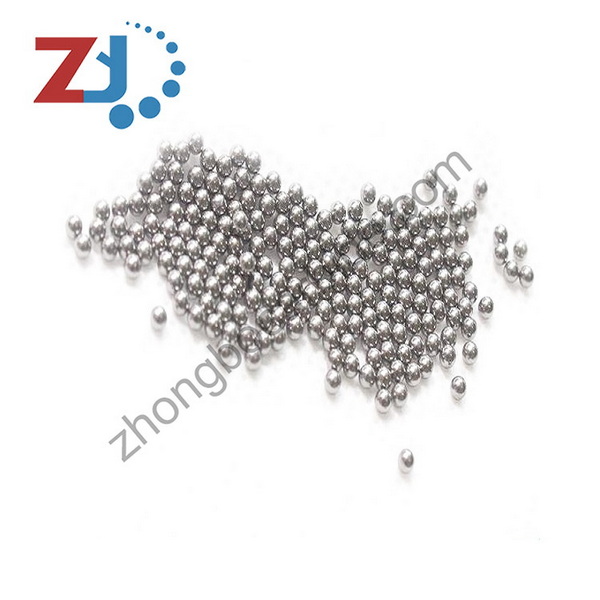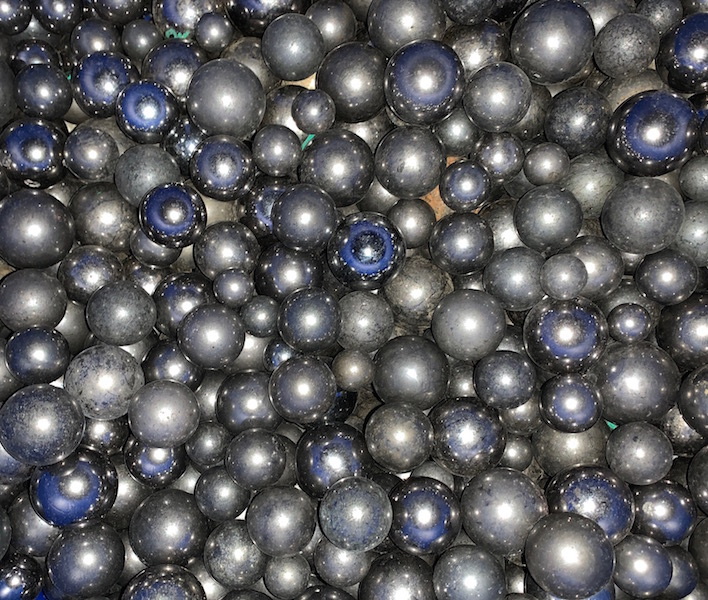Content Menu
● Introduction
● Raw Material Preparation: The Foundation of Quality
● Mixing Process: Achieving Homogeneity
● Pressing: Shaping the Pre-form
● Sintering: The Heart of the Process
● Grinding and Lapping: Achieving Precision and Finish
● Final Inspection: Ensuring Quality and Reliability
● Conclusion
● Frequently Asked Questions (FAQ)
>> 1. What are tungsten carbide balls used for?
>> 2. How does sintering improve tungsten carbide balls?
>> 3. What materials are used as binders in tungsten carbide production?
>> 4. Can tungsten carbide balls be recycled?
>> 5. What industries benefit from using tungsten carbide balls?
● Citations:
Tungsten carbide balls are indispensable components in a plethora of industrial applications, prized for their exceptional hardness, wear resistance, and ability to maintain precision under demanding conditions. From bearings and valves to gauges and measuring instruments, their reliability is crucial. Understanding the complex manufacturing process behind these seemingly simple spheres is key to appreciating their value and ensuring optimal performance. This article delves into the intricate steps involved in creating tungsten carbide balls, from the selection of raw materials to the stringent quality control measures that guarantee their superior characteristics.

Introduction
Tungsten carbide (WC) is a composite material consisting primarily of tungsten and carbon atoms. Its hardness approaches that of diamond, making it exceptionally resistant to abrasion and deformation. The process of manufacturing tungsten carbide balls involves a sophisticated series of steps, each carefully controlled to ensure the final product meets exacting specifications for size, shape, density, and surface finish. These balls are not merely generic components; they are engineered for high-performance applications where precision and durability are paramount. A thorough understanding of their manufacturing process is therefore essential for engineers, designers, and procurement specialists who rely on these components in their respective fields.
Raw Material Preparation: The Foundation of Quality
The journey of a tungsten carbide ball begins with the meticulous preparation of raw materials. The quality and purity of these initial components directly influence the properties of the final product. This phase comprises two crucial steps:
1. Tungsten Powder Production: Tungsten metal powder is the primary constituent. It's typically produced by a process called hydrogen reduction. Tungsten oxide (WO3), often derived from naturally occurring ores, is heated in a furnace under a stream of hydrogen gas. The hydrogen reacts with the oxygen in the tungsten oxide, forming water vapor and leaving behind pure tungsten powder. The particle size and morphology of the tungsten powder are carefully controlled, as these characteristics impact the subsequent sintering process and the ultimate density and strength of the tungsten carbide.
2. Carbon Addition: Carbon, the second essential ingredient, is introduced in the form of fine carbon black powder. The amount of carbon added is crucial for achieving the desired stoichiometry (the correct ratio of tungsten to carbon) in the final tungsten carbide compound. Too little carbon will result in free tungsten metal in the microstructure, reducing hardness. Too much carbon will lead to the formation of undesirable graphite phases, weakening the material. The carbon powder is meticulously characterized for its purity and particle size distribution to ensure consistent and predictable results.
Mixing Process: Achieving Homogeneity
Once the raw materials are prepared, they must be intimately mixed to ensure a homogeneous distribution of tungsten and carbon. This step is critical for achieving uniform properties throughout the finished tungsten carbide ball.
- Mechanical Mixing: The tungsten powder and carbon powder are combined in a high-energy mixing mill. Various types of mills, such as ball mills or attrition mills, may be used. These mills employ grinding media (e.g., tungsten carbide balls or alumina balls) to agitate the powder mixture and break down agglomerates (clusters of particles), promoting intimate contact between the tungsten and carbon particles. The mixing process is carefully controlled in terms of time, speed, and atmosphere to prevent oxidation or contamination of the powder.
- Binder Addition: A binder material is added to the powder mixture to improve its flowability and compactability during subsequent pressing. Cobalt (Co) is the most common binder, although nickel (Ni) or iron (Fe) may also be used in specific applications. The binder acts as a "glue" that holds the tungsten carbide particles together during pressing and sintering. The amount of binder added typically ranges from 6% to 15% by weight, depending on the desired properties of the finished product. Higher binder content generally increases toughness but decreases hardness.
Pressing: Shaping the Pre-form
The mixed powder is then compacted into a pre-form, a rough approximation of the final ball shape. This step is essential for achieving the desired density and geometry before sintering.
1. Compaction: The powder mixture is fed into a die cavity and subjected to high pressure using a hydraulic press. The pressure compacts the powder, forcing the particles into close contact and creating a solid pre-form. The shape of the die determines the initial shape of the ball.
2. Binder Removal (Debinding): After pressing, the pre-forms contain the organic binder material that was added to improve flowability. This binder must be removed before sintering to prevent contamination and ensure proper densification. The debinding process involves heating the pre-forms in a controlled atmosphere (e.g., vacuum or inert gas) to a temperature high enough to decompose and volatilize the binder. The heating rate and atmosphere are carefully controlled to prevent cracking or distortion of the pre-forms.

Sintering: The Heart of the Process
Sintering is the critical step where the pre-form is transformed into a dense, strong tungsten carbide ball. This process involves heating the pre-form to a high temperature, causing the individual particles to bond together through solid-state diffusion.
1. High-Temperature Sintering: The debinded pre-forms are placed in a furnace and heated to temperatures typically ranging from 1400°C to 1600°C. The sintering atmosphere is carefully controlled to prevent oxidation or decarburization of the tungsten carbide. Vacuum sintering is commonly used, as it removes residual gases and promotes densification. During sintering, the cobalt binder melts and wets the tungsten carbide grains, facilitating their rearrangement and densification. The tungsten carbide grains grow and form strong bonds with each other, creating a dense, hard, and wear-resistant material.
2. Hot Isostatic Pressing (HIP): To further enhance the density and mechanical properties, the sintered balls may be subjected to Hot Isostatic Pressing (HIP). HIP involves applying high pressure (typically 100-200 MPa) and high temperature simultaneously. The pressure forces any remaining pores or voids in the material to collapse, resulting in near-theoretical density. HIP is often performed in an argon atmosphere to prevent oxidation.
Grinding and Lapping: Achieving Precision and Finish
After sintering, the tungsten carbide balls are oversized and have a rough surface finish. Grinding and lapping are essential processes for achieving the precise dimensions, roundness, and surface finish required for demanding applications.
1. Rough Grinding: The sintered balls are initially ground using diamond grinding wheels. Diamond is used because it is one of the hardest materials known and can effectively remove material from the extremely hard tungsten carbide. The rough grinding process removes the bulk of the excess material and brings the balls closer to the target size.
2. Lapping: Lapping is a finer grinding process that uses a lapping compound (a slurry of abrasive particles in a liquid carrier) to polish the surface of the balls and achieve a mirror-like finish. The balls are placed between two rotating lapping plates, and the lapping compound is fed continuously onto the plates. The abrasive particles in the lapping compound remove microscopic amounts of material, gradually improving the surface finish and roundness of the balls.
Final Inspection: Ensuring Quality and Reliability
The final step in the manufacturing process is a rigorous inspection to ensure that each tungsten carbide ball meets the required quality standards.
1. Dimensional Measurement: The diameter and roundness of each ball are measured using precision instruments such as digital micrometers, laser micrometers, and roundness testers. These instruments can measure dimensions with an accuracy of a few micrometers (millionths of a meter). Balls that do not meet the dimensional tolerances are rejected.
2. Visual Inspection: The surface of each ball is visually inspected under high magnification to check for defects such as scratches, pits, cracks, or inclusions. Automated optical inspection systems may be used to detect these defects more efficiently and reliably.
3. Hardness Testing: The hardness of each ball is measured using a Vickers or Rockwell hardness tester. The hardness test measures the resistance of the material to indentation. Balls that do not meet the specified hardness range are rejected.
4. Density Measurement: The density of a sample of balls is measured using Archimedes' principle. This method involves weighing the balls in air and then weighing them immersed in a liquid of known density. The density is calculated from the difference in weight. Balls that do not meet the specified density range are rejected.
Conclusion
The manufacturing of tungsten carbide balls is a complex and demanding process that requires careful control of each step, from raw material selection to final inspection. The exceptional hardness, wear resistance, and precision of these balls make them essential components in a wide range of industrial applications. Understanding the intricacies of the manufacturing process allows engineers, designers, and procurement specialists to appreciate the value of these components and select the appropriate grade and quality for their specific needs. Continuous improvements in manufacturing techniques, such as the development of new sintering methods and advanced inspection technologies, are further enhancing the performance and reliability of tungsten carbide balls.

Frequently Asked Questions (FAQ)
1. What are tungsten carbide balls used for?
Tungsten carbide balls are primarily used in precision instruments, bearings, valves, and other applications requiring high wear resistance, dimensional stability, and corrosion resistance. They are also employed in gauging, checking, and ballizing applications.
2. How does sintering improve tungsten carbide balls?
Sintering is a heat treatment process that fuses the powdered materials together at high temperatures, enhancing the density, strength, and hardness of the tungsten carbide balls. It eliminates porosity and creates strong interparticle bonds.
3. What materials are used as binders in tungsten carbide production?
Cobalt (Co) is the most common binder material used in tungsten carbide production. Nickel (Ni) and iron (Fe) may also be used as binders in specific applications, depending on the desired properties of the finished product.
4. Can tungsten carbide balls be recycled?
Yes, tungsten carbide can be recycled. The recycling process typically involves crushing the used tungsten carbide tools or components and then chemically or mechanically separating the tungsten carbide from the binder material. The recovered tungsten carbide can then be reused to manufacture new products.
5. What industries benefit from using tungsten carbide balls?
A wide range of industries benefit from using tungsten carbide balls, including:
- Aerospace: For bearings in aircraft engines and landing gear.
- Automotive: For ball bearings, valve seats, and fuel injection systems.
- Oil and Gas: For downhole tools and valves.
- Medical: For surgical instruments and dental drills.
- Electronics: For precision components in electronic devices.
- Mining: For wear parts in mining equipment.
Citations:
[1] https://www.jinxincarbide.com/news/how-to-manufacture-tungsten-carbide-ball
[2] https://www.ee.cityu.edu.hk/~gchen/pdf/Writing.pdf
[3] https://www.precisionballs.com/Tungsten-Carbide-Ball.php
[4] https://blog.csdn.net/qq_34917728/article/details/125122327
[5] https://www.maxcarbide.com/info-detail/production-process-of-tungsten-carbide-ball
[6] https://www.163.com/dy/article/EDIGQUV605370K28.html
[7] http://www.zttungsten.com/wap/content/
[8] https://jphe.amegroups.org/article/view/4265/10863
[9] https://patents.google.com/patent/DE3835234A1/en
















